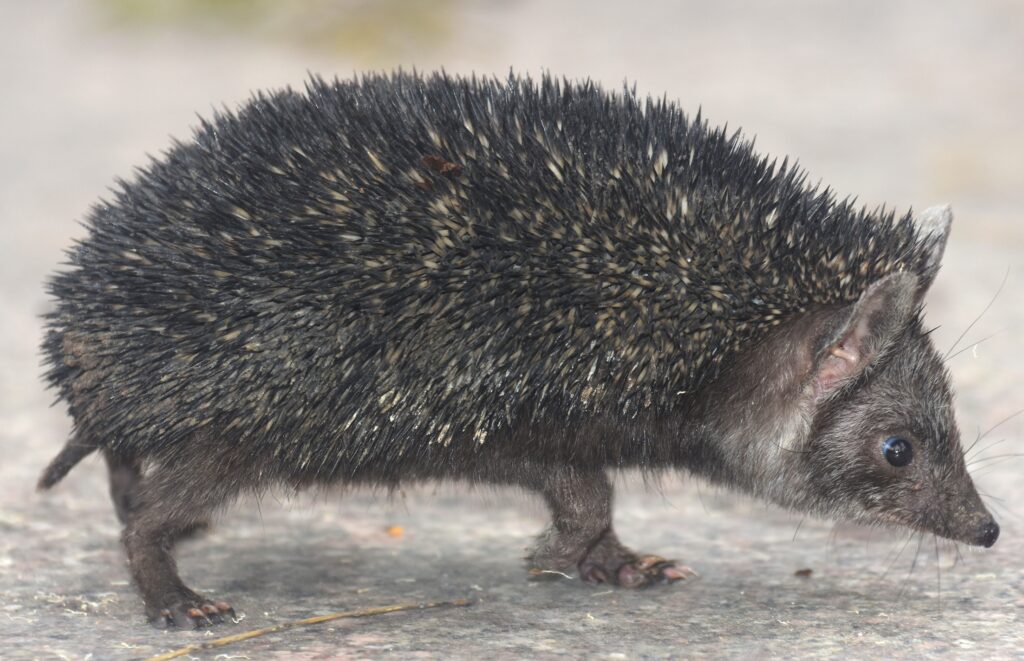Presence of Indian Long Eared Hedgehog reported in Nowshera
RAJOURI, March 14: The first ever authentic record of the Indian Long-eared Hedgehog reported from the Nowshera area of the Rajouri-Poonch Wildlife Division. The team headed by Amit Sharma Wildlife Warden Rajouri-Poonch captured the animal from Nowshera belt and the identity was confirmed by Dr. Shyamkant S. Talmale, Scientist C, Zoological Survey of India. The series of other procedures like DNA analysis and morphometric studies have to be carried out by Dr. Vineeta Sharma, Assistant Professor Central University, for which the samples have been taken.

The Indian long-eared hedgehog (Hemiechinus collaris) is a small species of mammal native to northern India and Pakistan. The Indian long-eared hedgehog is a relatively small hedgehog. It is a nocturnal animal that is often found inhabiting burrows. Similar to most hedgehogs it has spines on its back, embedded into a muscle sheath. The sheath forms a bag-like structure that the animal can hide inside for protection. It can also erect its spines to further protect from predators.
The Indian long-eared hedgehog has a well-developed set of senses because of its large ears, eyes and whiskers near its snout. These senses, especially smell, help them find food and/or a possible partner. The Indian long-eared hedgehog is insectivorous, feeding on small insects.
The Indian long-eared hedgehog is found in India (Gujarat, Rajasthan and Uttar Pradesh) and Pakistan (North West Frontier Province, Punjab and Sindh). They are seasonal breeders. The males are active from March to August while the females are active from April to August. It is notable for a quite complex mating ritual that involves “dancing” around females for several days before mating.
Sarvesh Rai, Pr. Chief Conservator of Forests/Chief Wildlife Warden, congratulated the staff of the Rajouri-Poonch Wildlife Division for the confirmation of the first ever authentic presence of the Indian Long-eared Hedgehog in the J&K UT and has directed the Wildlife Warden to carry out population estimation of the animal in that particular area and to survey the other area for its presence in collaboration with the universities and Wildlife Institute of India. The sighting of Indian Long-eared Hedgehog is indeed an addition in the long list of biodiversity of the J&K UT.





